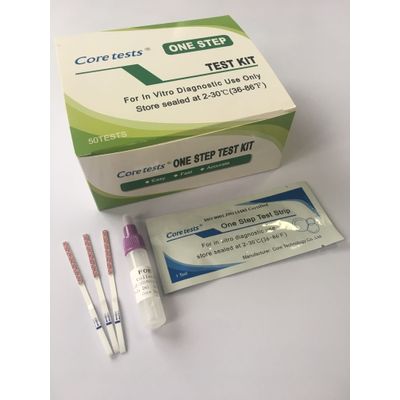


One Step Fecal Occult Blood Test Strip
INTENDED USE: The Fecal Occult Blood Test Device is a qualitative test that detects human hemoglobin in human fecal specimens. The test is a visual one step, in-vitro assay. It is intended for professional use to help diagnose gastrointestinal bleeding.
1. Collect stool specimen by using the sample collection tube provided.
2. Unscrew the top of the sample collection device, take out the sample collection stick, and collect the specimen by dipping the stick into 3 different places of the stool specimen.
3. Replace the stick in the sample collection tube and screw tightly.
If the specimen cannot be tested on the day of collection, store the stool specimen at 2-8?. Bring the specimen to room temperature before testing.
1. Bring the pouched test strip to room temperature (15-30?) prior to testing. Do not open the pouch until ready to perform the assay.
2. Remove the test strip from the sealed pouch. Lay it on a flat, clean and dry surface.
3. Specimen collection. Please see “SPECIMEN COLLECTION AND STORAGE”.
4. Shake the sample collection tube well.
5. Holding the sample collection tube upright, carefully break off the tip of collection tube.
6. Drop 8-10 drops of sample solution into a collection cup. Immerse the test strip into the solution for at least 5 seconds with the arrow end pointing toward the solution. Do not immerse the strip above the printed MAX line. Remove the test strip from the solution and lay it on a flat, clean and dry surface. / Or squeeze 3 drops of the sample solution on the sample pad of the test strip.
7. Read test results between 5-10 minutes. Do not read results after 10 minutes.
Positive: Two colored lines appears, one in in the test region and another one in the control region. This indicates a positive result no matter the test line is stronger or weaker than the control line.
Negative: Only the control line appears in the result area. This indicates a negative test result.
Invalid: If the control line does not appear, the test results are invalid regardless of the presence or absence of the test line.
NOTE: Insufficient specimen volume or incorrect procedural techniques are the most likely reasons for the control line failure. Review the procedure and repeat the test with a new strip. If problem persists, please contact your local distributor.
